Pond Plants, Ponds
Water plants are a great way to beautify your pond. But fish pond plants don’t just add aesthetic appeal, they also play a very vital role in your pond’s overall health. Adding plant life to a koi pond is important in creating and maintaining a healthy ecosystem. Pond plants have many important roles within a pond’s ecosystem including purifying the water by reducing nutrients, filtering out sediments, breaking down toxic compounds, and digesting unwanted substances. Planting a wide variety of water plants will not only ensure balanced filtration, but will also provide a lot of visual interest.
There are a lot of options when it comes to selecting plant life, but here is a pond plants list that you might find helpful in narrowing down the field. Pond plants are an investment not only in the beauty of your pond, but in its health as well.
Best Hardy Pond Plants for a Koi Pond
Of course you’ll want some water plants that grow in your pond. Floating plants are those that grow in or near the water’s surface. While water lilies were probably the first idea that popped into your head, there are actually a lot more choices than that. Here are three others that you may not have thought of, but would make excellent fish pond plants both because of their beauty and their beneficial attributes.
Water Lettuce
This free-floating plant is among the world’s most productive freshwater aquatic plants. Its bright green leaves provide some attractive foliage to your water’s surface. The plant bears a resemblance to an open head of lettuce, hence its name. Once established it will grow easily, but must be controlled. In little to no time, water lettuce can take over your pond’s surface and choke out oxygen.
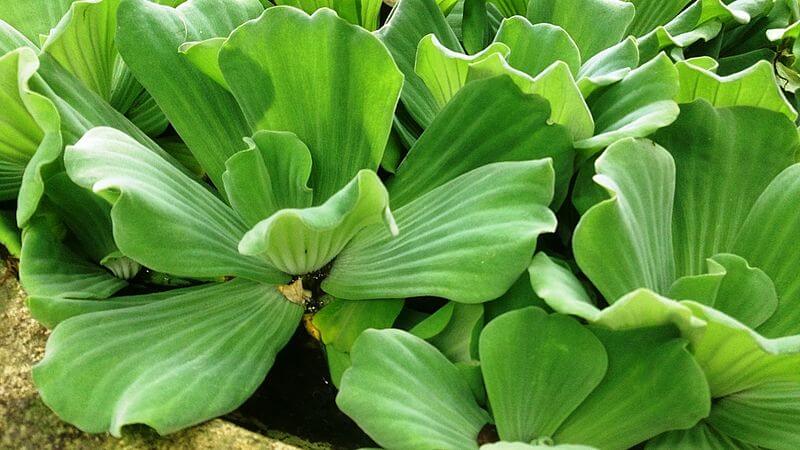
As long as it’s under control, water lettuce can provide wonderful benefits including the absorption of nutrients as well as shade and spawning ground for your fish. It’s sturdy top also makes it a nice place for your resident frogs to hang out and sunbathe.
Parrot’s Feather
The feathery blue-green foliage of this unique-looking plant helps provide shade for your koi. Because of its ability to take root in wet soil above the water, this floating plant can even be used in waterfalls and streams.
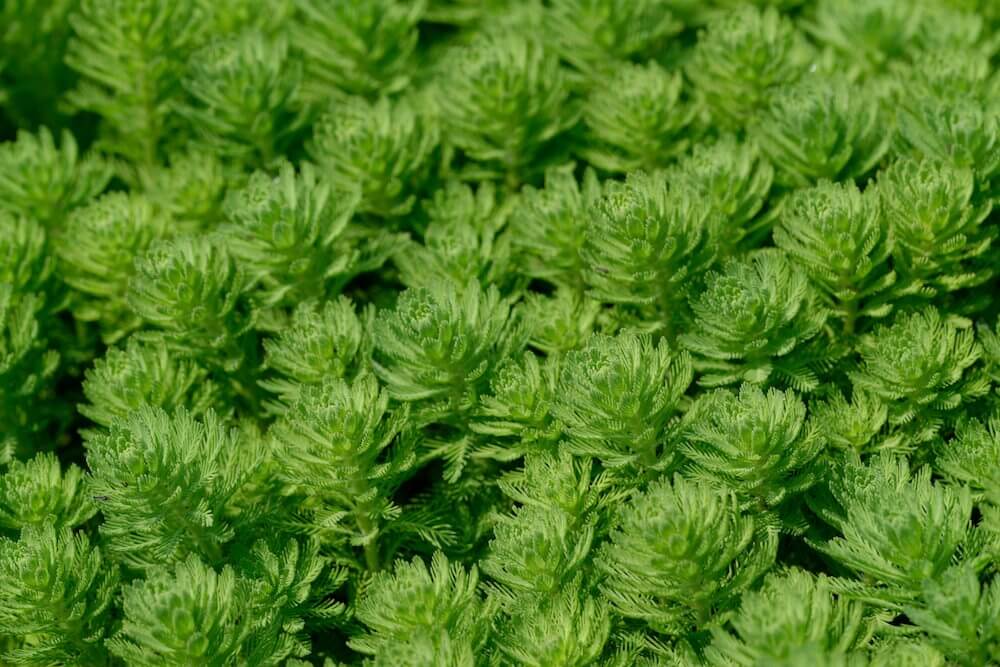
It provides a lot of vertical interest with its stems growing up to 10 inches high.
Water Hyacinth
The water hyacinth is a free-floating perennial plant that can grow as high as 3 feet. With delicate purple flowers and thick green leaves, it’s an eye-catching and attractive plant but it can also become invasive if not controlled. Often touted as the “world’s fastest growing plant,” water hyacinth can quickly take over the entire surface of your pond if you let it.
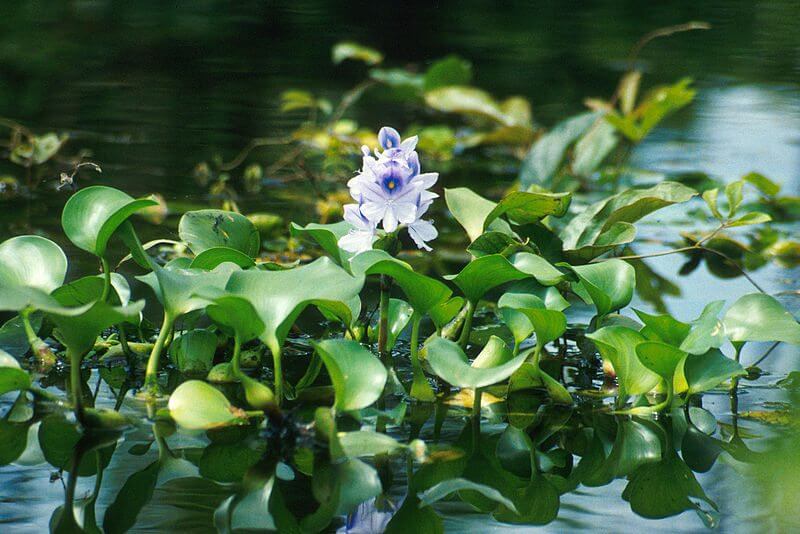
It is the roots of the water hyacinth that act as purifiers by absorbing impurities in the water. It is known to be very good at removing unwanted algae from your pondscape.
Types of Pond Plants For Around Fish Pond
It’s equally important to have plants around the fish pond as it is to have them growing within it. In order to achieve a truly natural look, you’ll want a nice blend of plant life around your pond’s edges in order to create a complete habitat. Choosing the right plants to put around the fish pond will also go a long way in making the pond look like it was always there.
Cattails
These tall plants provide a tremendous amount of vertical interest and can grow up to nine feet tall. Cattails provide an important wildlife habitat for local birds and small critters.
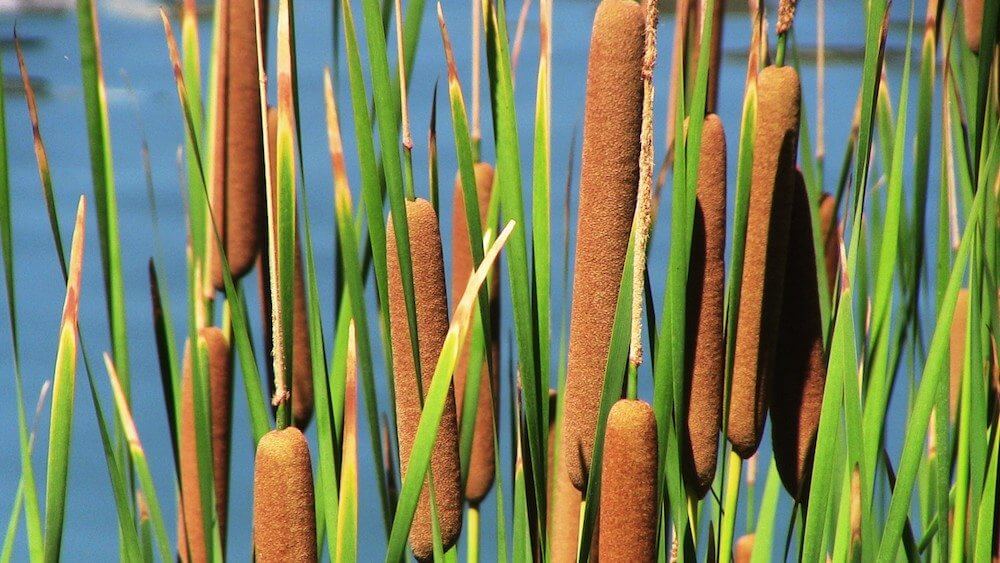
They also provide many benefits to your pond ecosystem as the stems are known to catch and slow water and help trap sediment and silt. New research has also revealed that cattails can remove polluting materials from the water surrounding their roots.
Horsetail
This spiky green plant will also provide some vertical interest. Horsetail has a very similar look to bamboo and is characterized by its hollow stem.

There are 20 different species of horsetail and its final height is dependent upon its species, though most grow to be around one or two feet tall. Horsetail does not produce flowers or seeds.
Meadow Sage
This salvia plant is long-blooming and easy to care for around your pond. Flowering in a beautiful royal purple, Meadow Sage will provide a lot of vibrant color around your pond.
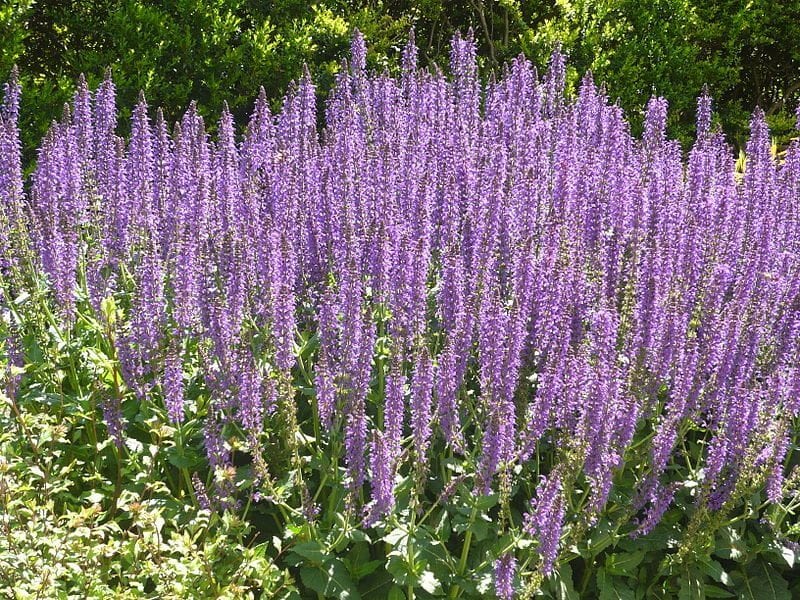
It will also attract both honeybees and is known to be a favorite of hummingbirds to truly round out the backyard ecosystem you’ve created.
Fish Pond Plant Maintenance
These fish pond plants are all relatively easy to maintain. Like fish, your plants will need nutrients to survive and an expert can guide you in providing plant food and nourishment. A big part of the maintenance of fish pond plants is simply keeping a watchful eye on them to ensure they’re getting enough sunlight and that they aren’t becoming overgrown.
The more plants you have, the more important it is to keep an eye on their condition. You must always keep an eye out for overgrown or dead leaves as decaying matter can rob your fish of oxygen. Try to make it a habit to check on your pond plants’ health at least once a week. Keeping a good mix of plant life will also help you sustain the overall health of your pond as the varying root sizes will provide varying benefits.
An expert will ensure that your pond has attractive fish pond plants that are easy to maintain or can even maintain the pond for you. California Waterscapes offers fish pond maintenance that involves a total cleaning in order to get your pond back to pristine condition.
A pond expert will also be sure to include the right mix of plant life to help your koi thrive. Water plants are such an integral part of your pond area and are an investment that should not be taken lightly. A pond expert will know what mix of plants look right together, how to plant them so that they become established and thrive, and how to make it all look like a natural addition to your landscape. At the end of the day, it’s both an art and a science that makes it just right.
We love incorporating beautiful and beneficial plant life into our pond designs. If you’d like us to help you select the best fish pond plants for your pond project, schedule a pond design consultation or give us a call at 818-244-4000 for more information.
Image Sources: water lettuce, parrot’s feather plant, water hyacinth, cattails, horsetail plant, meadow sage
Pond Plants, Ponds, Streams, Water Features, Waterfalls
Water Gardening

The water gardening lifestyle is becoming more and more a way of life in Southern California.
More and more home owners are stepping out of their work-a-day world of deadlines, cell phones, traffic jams, anti social co-workers and entering the tranquil sanctuary of their own water garden.
How many people do you know who escape from our technical concrete jungle and go to a lush green golf course, escape for a hike in the mountains, venture into a forest or lay at the beach soaking in the sounds of cascading waves?
40 to 60 hours a week most of us are surrounded by computers, pagers, mass media, Xerox machines and all the other things that come in this vast sea of circuits and technology that is anything but natural.
C-3PO from Star Wars may feel at home in this environment, but for most of us humanoids, this daily interaction leaves us with a longing to escape to Mother Nature.
And that is the pleasure of water gardening! The Zen atmosphere and tranquility of Mother Nature right in your backward. No need to jump on a plane or to drive hours out of the city to feel close to nature.
Imagine sipping tea with your spouse, listening to soothing sounds of water spilling over the rocks and into your pond. Colorful Koi swim about a lily filled pond. You take a deep breath and inhale the aroma of the surrounding plants and flowers. A blue jay lands, skips over to the water and bathes in the stream. All this while having a quality conversation with your spouse that you can’t have in front of the television.
Water gardening provides a hobby for the whole family to enjoy. It’s very common to hear a home owner describe how their water feature has increased communication between them and their spouse, how it’s lured the children away from the mesmerizing effect of video games and TV with pond critters that are far more interesting.
Water features also make an excellent place to entertain friends and family. Chat with neighbors over coffee or just to spend some quality alone time with oneself.

The new eco-friendly water features support all kinds of beautiful creatures to enhance that close-to-nature feeling. Fish, frogs, Koi, dragonflies and turtles are a few of the beautiful critters that you can purchase and or naturally attracted to your pond. Birds of all kinds visit often to drink and bath in the clear water. There are a variety of lilies, flowers, aquatic plants, and grasses that enhance the beauty and fragrance of your water garden.
This a great time to add a natural pond and waterfall to your backyard. Call today or fill out a Free Estimate form on this page to receive your Free Design Consultation with one of our expert water gardening professionals.
Pond Filtration, Pond Maintenance, Pond Plants, Ponds
Aquatic algae, (thought of by many as pond scum) are microscopic plants that grow in sunlit water that contains phosphates, nitrates, and other nutrients. Algae, like all aquatic plants, add oxygen to the water and are important in the fish food chain. They share many characteristics with plants, although they lack true stems, roots, and do not flower. Common algae that forms in ponds include planktonic algae (green water algae) and filamentous algae (string algae).
Algae is actually important and beneficial to a pond or water garden. It is part of the eco-system we want to establish in the ponds because it helps in maintaining good water quality. If the pond filtration and circulation system are properly designed, the nutrients and toxins can be controlled, there by controlling algae growth. The perceived algae problem begins when algae grow in abundance, but this condition is really a symptom or an indicator of excessive nutrients and or toxins in the pond water.
Excess nutrients are typically caused from feeding the fish too much, too often, or both. In addition, leaves, grass, or other organic material find their way into the pond, settle to the bottom and begin decaying and releasing nutrients into the water.
Excess toxins are typically generated directly from fish and decomposing matter. When fish breath they release ammonia into the water form their gills. If the pond is overstocked, either by too many fish or too large of fish, you may find the water looks like pea soup. In addition, decomposing organic material such as fish waste, leaves, sticks, grass, etc., can generate toxins.
As a general rule, if you are experiencing an algae problem, adding more of the ‘right kind’ of filtration will help you reduce and manage the amount of algae in your pond.
This includes:
- Plants, such as lilies, shade the pond and reduce the amount of sunlight available for algae growth.
- Fish, especially koi, will eat a tremendous amount of algae.
- Rocks and gravel provide surface areas for bacteria to colonize in and between the rocks, which is like having an additional biological filter in the pond.
- Skimmers act as a mechanical filter by removing leaves and other debris from the surface of the pond before they can sink to the bottom and decompose and then turn into either nutrients or toxins.
- Biological Filters provide an area for bacteria and enzymes to colonize which consume nutrients and help break down organic debris and fish waste that would otherwise contribute to water quality problems.
Algae is a part of nature just like the other parts of the eco-system. The main goal in keeping clean water is not to attempt to completely rid your pond of algae, but to keep it in balance with nature.

Pond Maintenance, Pond Plants, Ponds
This is one of the biggest myths surrounding water gardening today. Most books say a pond needs a minimum of 4-6 hours of sunlight a day for aquatic plants to live. They discourage building a pond in a shady area.
The truth is that aquatic plants do bloom more and flourish better in high sunlight conditions. This is not debatable. What is debatable is how well aquatic plants can do in low light conditions.
(more…)
Pond Maintenance, Pond Plants, Ponds

Aquatic plants, while providing the obvious aesthetic appeal to the water garden also serve the important role of helping to maintain the overall health and appearance of your pond.
Pond plants help purify the water by reducing nutrients, filtering out sediments, breaking down toxic compounds, and digesting unwanted substances.
Planting a diversity of species in the pond will ensure balanced filtration. Plants such as Cattails have short roots extending only 6-12 inches, where as Bulrushes can extend up to 36 inches allowing each to grab nutrients from different regions.
Rooted aquatic plants also help promote healthy bacteria populations. Without beneficial bacteria, nitrogen levels in the pond would become elevated, causing health problems in fish, diminished water quality, and promoting excess algae.
Certain plants, such as water hyacinth, are more capable than others at removing large amounts of algae-causing nutrients. Some waste water treatment facilities in warmer climates have even been designed specifically to use hyacinths.
Aquatic plants’ significance in filtration, their ability to provide better water quality, reduce maintenance and balance the ecosystem, all the while helping to create a more natural looking environment, are all reasons for you to consider the importance of aquatic plants for your pond.










